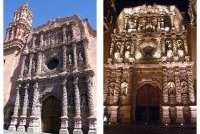
As a “colonial” centro historico Zacatecas has a number of similarities with Guanajuato – particularly its setting in a deep(ish) valley and its wealth from Silver. We visited it first and were quite impressed – until we saw Guanajauto! Michelin has it about right when it grants Guanajuato *** (worth a journey) and Zacatecas ** (worth a detour).
With a population of about 130000 it is significantly larger then Guanajuato. Its valley is less confined and it has spread more with a surrounding and unattractive suburban area but the centre is pleasant and relaxed – albeit not traffic free. The city lies at an altitude of 8000ft – which you will feel if you do much walking! The cathedral (photo 1) is perhaps the only building which trumps Guanajuato’s offering with its magnificent “pinkish” façade - its floodlit appearance at night is particularly fine (photo 2). Beyond that there is the usual range of “niche” museums (covering, inter alia, Surrealist Art and Indigenous Masks), pleasant gardens, squares, colonial streets, mansions etc. We didn’t take the teleferico which, unlike Guanjuato’s funicular, actually crosses over the city from one side to the other – but then Zacatecas has no viewpoint quite like Pipila. An interesting “non-UNESCO” visit is to the Quinta Real Hotel built around Zacatecas’s bull ring – the (expensive for Mexico but not so much in European terms) restaurant is built into the seating tiers. It is at least worth going into.
Keep reading 0 comments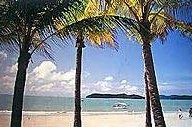
Gunung Mulu National Park
Within the boundaries of Gunung Mulu National Park in Sarawak is one of the most extensive and spectacular limestone cave systems on earth, as well as the second highest mountain peak in the state. Gunung also enjoys unusually high rainfall. As a result it bursts with life, and many new plant and animal species have been discovered here. Officially constituted in 1974 and opened to the public in 1985, Gunung Mulu National Park encompasses only 544 sq. km in North Sarawak, Borneo. Gunung Mulu's Caves are extraordinary. Mulu's Sarawak Chamber is the largest natural chamber in the world, and Deer Cave is the largest cave passage known to man. It has two huge entrances at either end of the mountain it penetrates. Most of Deer Cave is illuminated, one can see 600-foot waterfalls pouring from the roof following a rain storm. Perhaps the most popular attraction of this cavern, however, is the daily exodus of its colony of nearly a million bats. Every evening the bats stream from the cave to spend the night dining on Gunung's rich insect population.
Clearwater Cave is the longest cave system in Southeast Asia. Although little of it is open to park visitors without special permission, over a hundred kilometers of passages have been discovered so far. Not all of Mulu's limestone features are contained in caves. Gunung API, a 1,750 meter high mountain of limestone, lies directly beside Sarawak's second highest mountain peak, Gunung Mulu (2,376 meters). Both mountains …
Keep reading 0 comments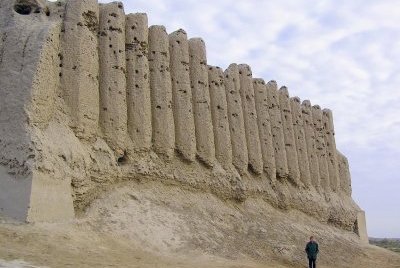
Those travellers who have followed the Silk Road will have become used to restored cities – Bokhara, Samarkand and Khiva in Uzbekistan. And very fine they are too. But if you venture south to Turkmenistan and visit Merv it is a very different sort of experience.
This 100 square kilometre site contains the remains of at least 5 different cities dating from the 6th century BCE through Alexander the Great and the Persians to the Seljuk Turks. At which point it was totally destroyed by Jenghiz Khan in 1221. The newer cities were built alongside (rather than “over” which is the norm in most continually inhabited sites) the old and all used mud bricks. So what you see is a jumble of walls, earthworks and misshapen buildings as they succumb to the elements.
If you are there you must have overcome the labyrinthine bureaucracy of Turkmenbashi (“Father of the Turkmen”) to get a visa. Indeed you will already be totally overwhelmed by his cult of personality – the gold statues, the photos, the books, the carpets with his picture on, the marble palaces, even his gold monogram in the corner of every TV program as it spouts again the details of this magnificent cotton harvest or that world class factory.
So see Merv as an antidote – a reminder of temporal nature of states whatever their politics and whoever their leader! All will be dust one day.
If you have obtained a visa you will probably …
Keep reading 0 comments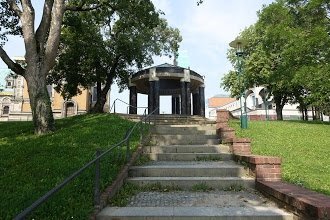
Following in my travel plans on Els footprints, I ventured to Darmstadt on the same weekend as my visit to the Ice Age Caves.
During my visit the Mathildenhöhe was fairly busy with plenty of tourist groups roaming the area. Several parts of the site were closed and undergoing renovations. In addition, the wedding tower was closed for … weddings. Still, I feel I managed to get a good look.
OUV
On the one hand side I get Els overall point. This is a consistent ensemble of Jugendstil buildings. The museum on site provides a great overview of the art objects created in the artist's colony. And while several of the buildings are off limits, you still get to see a lot of the Jugendstil interior design by visiting the museum and the wedding tower.
On the other hand side I left the site having taken less than ten pictures during my visit, all of them mediocre at best. Now, admittedly, I wasn't in the best possible shape. During the previous night there had been an oversupply of drinks and an undersupply of sleep. Still, I really tried to find a nice shot on a sunny day with blue skies and couldn't.
Part of it was due to the ongoing repair works of the site. In preparation for the world heritage site bid, the authorities have started renovating several of the buildings. Especially the artist houses seem in dire need of some construction …
Keep reading 0 comments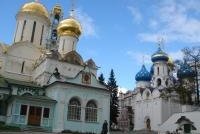
A small town just around 70 km. north of Moscow is Sergiev Posad or Zagorsk during Soviet time. As the former center of Russian Orthodox Church for many centuries, the town has special position for Russian, and the town monastery also has special title called Lavra which is the highest title for monastery granted by the Tsar. The town has become famous after Saint Sergius of Radonezh has been promoted as the patron saint of all Russia then the pilgrims from every corners of the Empire made their journey to this holy town.
The town monastery, which has been established by the saint himself in 1340 hence its name Sergiev Posad - Town of Saint Sergius, is located on the hill and surrounded by huge white wall making its fortress- liked appearance similar to the Novodevichy convent in Moscow but less ornate details. For inside, as typical Russian monastery the center is the five onion domes cathedral and this one is bright blue with golden star spangled, the very beautiful Cathedral of the Assumption; however, the true center for everyone is a small and dark Trinity Cathedral where the tomb of Saint Sergius located.
I was so overwhelming by the whole day memorial service melody and a long queue of pilgrims as well as tourists in this small golden and colorful cathedral, one of the most memorable moment of my Russia trip. The European baroque bell tower is another landmark for the monastery as it is so different with other …
Keep reading 0 comments
On my first trip to Andalucia I had also ventured for a day trip to Tangiers. I am not sure if it had occurred to me at the time that Tetouan had been within reach from Algeciras. Or if I had known but was too afraid to venture off the beaten path. For years since I had considered Tetouan as one of my stupid near misses. So when Ian proposed this year’s meetup in Gibraltar, I knew exactly what I wanted to do: Cross into Morocco and tick off Tetouan.
We quickly agreed to include the site in the itinerary of the 2017 meetup. As a consequence we now have the first meeting to take place in multiple countries (Spain, UK, Morocco) and outside Europe. Philipp and Els did the actual planning and it worked out perfectly fine. Many thanks!
Tetouan itself is a pleasant medina. It’s not very touristy. We only met one larger group roaming the narrow streets of the medina. The medina primarily serves as market for the local populace with very few souvenir shops. As such you will probably get a more authentic Moroccan experience than in places such as Fez or Marrakech or in nearby Tangiers. Personally, I also liked the colonial new town. Tetouan was the seat of the Spanish protectorate government of the province and it has plenty of colonial buildings to show for it.
The trip left me wanting to see more of Morocco and I …
Keep reading 0 comments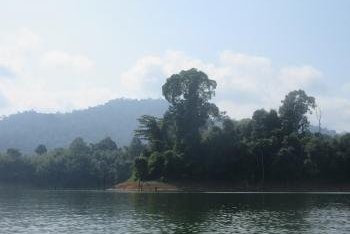
Belum Park is a large protected area of tropical forest in the northern part of Malaysia. The forest is shared with Thailand that also protects it as a national park, placed on T-list as well. As a transnational proposal, both parks have higher chance for inscription, although the path has not been announced yet (Malaysia placed it on T-list only in 2017).
It is quite easy to get to Belum State Park with a rental car. From Penang it is about 2.5-hour drive and the nearest WHS of Lenggong Valley is only 1.5 hours away. It is not the most popular part of Malaysia and the tourist base is quite small. It seems that the park cannot be visited on your own, as it requires boat transport on Temenggor lake. Interesting thing is that the lake is artificial and was created by Malaysian government to make life harder to local communist militias (this is what our guide told us, official reason was to generate electricity). The rebelliants applied hit and run strategy escaping to Thailand, what was obviously much more difficult with the huge lake in the center. Since 1989 there are no fights in this area.
The most convenient way to visit is booking one of the trips offered by Belum Tropical Resort. This is what I did and the experience was really pleasant. At first the guide took us (all transport by boat) to Rafflesia, giant parasite flower whose pitches may reach over one meter of diameter. Unfortunately …
Keep reading 0 comments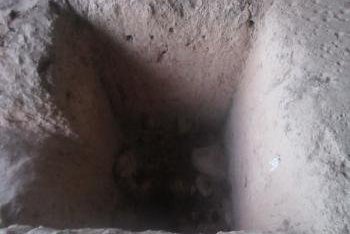
Site „visited” in August 2017. At the beginning I must warn all WHS fans – the highlight and the only place that provides any understanding of this site – Archeological Museum in Bukit Bunuh, as well as associated excavation area, is closed for renovation until further notice. Based on what I heard from the guard, the renovation works will last at least one more year.
As a result, my visit was limited to the excavation area of Bukit Jawa, which is located very close to the main road no. 76. Thanks to very precise coordinates provided on this site I was able to locate Bukit Jawa without any problems – although I cannot say it was worthwhile. Bukit Jawa is literally a hole in the ground (see photo) with a short description attached informing what was excavated in that hole. I tried to locate remaining sites, but could not find any signs – but based on others' reviews, they are not spectacular, too. That being said, I think there is no sence in visiting Lenggong Valley until the museum is reopened. For me the experience was comparable to visiting (in)famous Struve Arc monuments.
The site is very easily accessible with a rental car. From Penang it is less than 2 hours drive, Kuala Kangsar (with famous Sultan palace and the picturesque Ubudiah Mosque) is half and hour south. WHS fans may combine Lenggong Valley with Belum State Park, currently on Malaysian T-List, which is further north and is definitely worth …
Keep reading 0 comments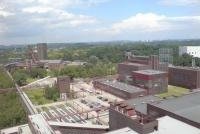
I visited only the Schacht XII and the coalwash. The guide was a young lady who really loves her job. Unfortunately it was only in german so i didnt understand everything well. The areal is built in cubism.
If you are a fan of technics this is a must see, if not then in this site you can learn much about coalmining processes and history too. This site is quite large, so prepare to take good shoes.
Pic: view on site from the roof of the coalwash
Keep reading 0 comments
In our trip to Germany we have visited the Roman fort of Saalburg, part of the 220 kilometres Limes barrier Raeatian section, one of the walls that have been marking the boundaries of the Roman empire for some centuries. The original fort (90 AD) covered an area of about 0,70 hectares and had a rectangular plan with corner towers. In 135 AD was built a larger fort, of 3,2 hectares (221 by 147 metres), over the earlier one, with four gates, a stone and timber defence wall with rampart walk and a double ditch. The remains of many internal buildings have been excavated and entirely reconstructed in stone and timber under the emperor William II. There are the granary, the commander’s quarters, the barrack blocks for the common soldiers and the headquarters buildings with the monumental assembly room the colonnaded courtyard, the rooms, the offices and the armouries. Interesting are the reconstructions of a barrack room, home to a squad of eight soldiers who lived in close quarters, of the richly decorated officer’s dining room, of the regimental shrine, the spiritual and religious centre of the fort, of the ovens and of the “restaurant”. Between the remains of the civilian settlement just outside the fort there is a bath house, a guest house, the cellars and the wells of the private houses and the reconstructions of the Jupiter column and of the Temple of Mithras. Near the fort there is a reconstruction of the limes at an ancient border crossing …
Keep reading 0 comments
I really enjoyed my visit to this site, and it had a distinctly African feel to it, due to the mud brick architecture.
The village sits on a hill on the bank of a small river flowing down from the Atlas Mountains. It was reputedly founded in 757, and was started as the home for one family and the settlement has grown out of this. The tomb of its founder Ben-Haddou is at the base of the hill behind the town.
The front parts of the village are well restored, as this has been the setting of many films, from Lawrence of Arabia through to Gladiator. It has also been a testing ground for UNESCO and ICOMOS in preservation techniques. Therefore the first part of the town looks very impressive almost new, the higher up the hill you climb however the less restoration you see and this gives a good feel for what the site would be like with out the investment. It is quiet a nice climb up to the top (picture) but be prepared for a fair bit of rough ground, there is defiantly no paving here.
Many of the houses are still lived in, although most now cater for tourists as sellers of local, and not so local (Malian) artefacts. On the other side of the river, is a more modern part of town, where you will find restaurants and shops still mostly mud brick architecture though. You have to cross the river by stepping-stones which is …
Keep reading 0 comments
We have visited all three of the listed tels in Israel, plus many more besides. These three all share the fact that the sites were first settled around 5000 years ago, and have experienced multiple layers of occupation since then; in the case of Hazor and Megiddo, around 20 layers, and Beersheeba about 9 layers.
Tel Hazor is the most northerly, located near Rosh Pinnah. Buses heading north towards Kiryat Shmona and Metulla can drop you at the access road, but do not get confused with Hazor kibbutz which is several kms south. It is a hot, dry and dusty site most of the time, but there are a number of excavations opened up. To find some shade at the site, you can descend into the water works chamber. There is an interesting museum a short distance away.
Har Megiddo (Mount Megiddo or Armageddon) overlooks the Jezreel Valley, and is best accessed by buses travelling between Haifa and Afula. We have been here several times and continue to find it fascinating. Of particular interest are the sunken grain silo, the huge water cistern, and the tunnel (which you can walk through in the shade) which leads to a spring outside the defensive wall. An important occupier was King Solomon, abouth three thousand years ago, who had most of the structures built that can be seen today. The most recent occupiers were the British forces during the First World War.
Tel Beersheeba, is about 5km away from the modern city of …
Keep reading 0 comments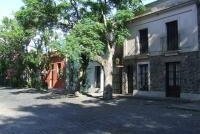
After the noise and pollution of Buenos Aires across the river, Colonia was a breath of fresh air. So laid back and relaxing. On the wide, tree-lined streets even the motor vehicles were in keeping with the surrounding buildings; not a car to be seen built after 1950!
We went across the river on an early ferry, and it was like entering a ghost town. But around 11am the locals began to appear, and very friendly they were too.
We loved the colourful old Portuguese cottages around the Plaza Mayor, and the pinted blue tiles that appeared everywhere.
Keep reading 0 comments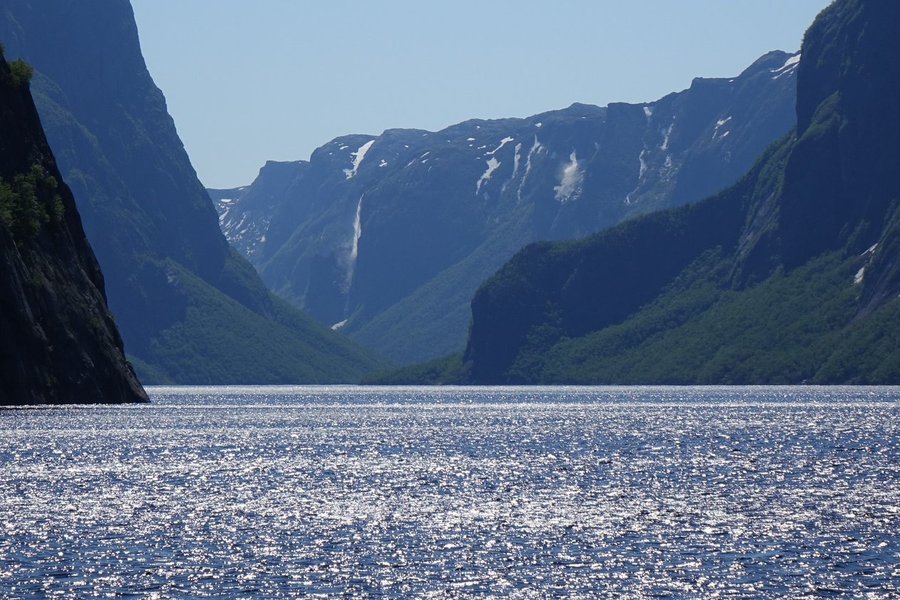
Just visited in May, 2004. More moose than humans. Breathtaking waterfalls and lakes and stunning snow topped mountains. Rocky Harbor has some good hotels all with spectacular sunsets. Don't miss the Western Brook Pond trip and a hike among the rocks from the earth's mantle.
Keep reading 0 comments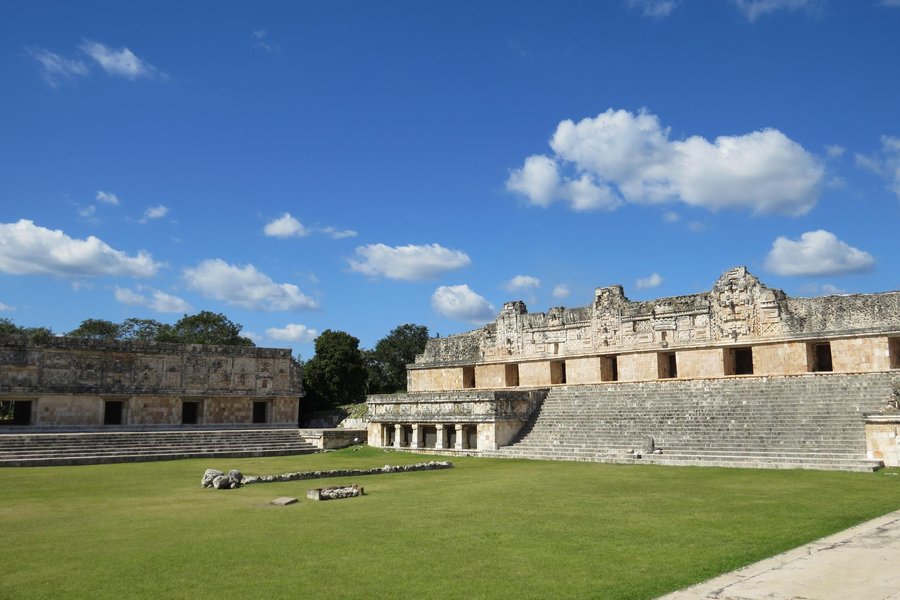
Uxmal is near Merida on the Yucatan peninsula. Uxmal is less frequently visited than nearby Chichen Itza. This ruin is indicative of the Puuc style of architecture and was built around 300-950 AD. The pyramid of the magician is crisply restored as are many other buildings but others are still in complete ruin. The Palace of the Governors is built on the highest point in the area and has some unusual carving. Look for the grotesque carved masks and chak carvings. Also, don't miss the separate site of Kabah nearby. The arch has some original hand prints on it. Some comfortable hacienda style hotels are nearby. I don't think you can get here on a public bus but you can book a tour from Merida and maybe even from Cancun. The place was deserted when I visited in 2003.
Keep reading 0 comments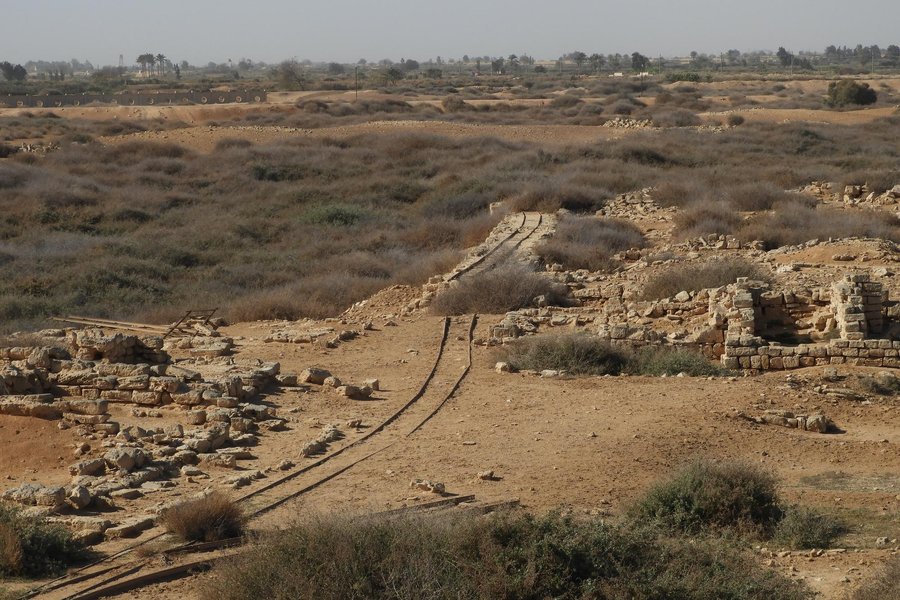
Abu Mena is not an easy place to visit. It's about 90km West and a bit south from Alexandria. You have to take a taxi which should cost about US$20. The monastery is huge with lots of buildings, a beautiful basilica that is currently being restored. The current Egyptian craftsmanship is far better than anything else being done in the country right now. The ancient monastery archaeology site is off limits to tourists and is virtually impossible to even find on your own. There must have been 2,000 people at the monastery when I visited in September 2004 but I couldn't find one who spoke English, Spanish or French. The ride itself, out through the desert and past a huge abandoned industrial park is worth the trip alone. Take bottled water - none is available at the monastery. St. Mina was an interesting guy. This is the site where the camel carrying his body to burial stopped. A healing spring miraculously started here and many pilgrims came for healing.
Keep reading 0 comments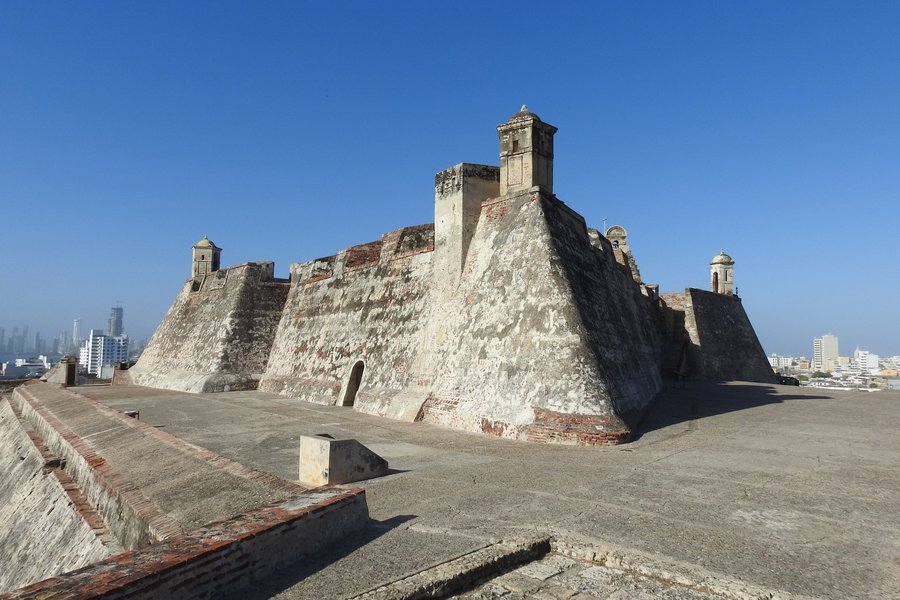
Cartagena is a port city known for its giant fort. Think old town San Juan, Puerto Rico or Campeche, Mexico only bigger. The town is extremely well preserved and receives few tourists most likely because of Colombia's violent drug trafficking.
The clean and tidy town is dominated by a huge, well preserved stone fort that can be explored from top to bottom. The streets beneath the fort are a cobbled jumble of colorful two story homes and shops. An elevated promenade along the water (appears to be a built up sea wall) allows you to see all over the historic centre. Spanish colonial architecture influence is evident throughout the old part of the city.
Cartagena contains some beautifully preserved churches and convents in the hills above the town as well as the requisite spanish baroque style cathedral in the city centre.
Cartagena also has some areas that are not tourist friendly but it is generally safe. You need to speak at least a bit of spanish though for an enjoyable visit. Prices are dirt cheap!!
Keep reading 0 comments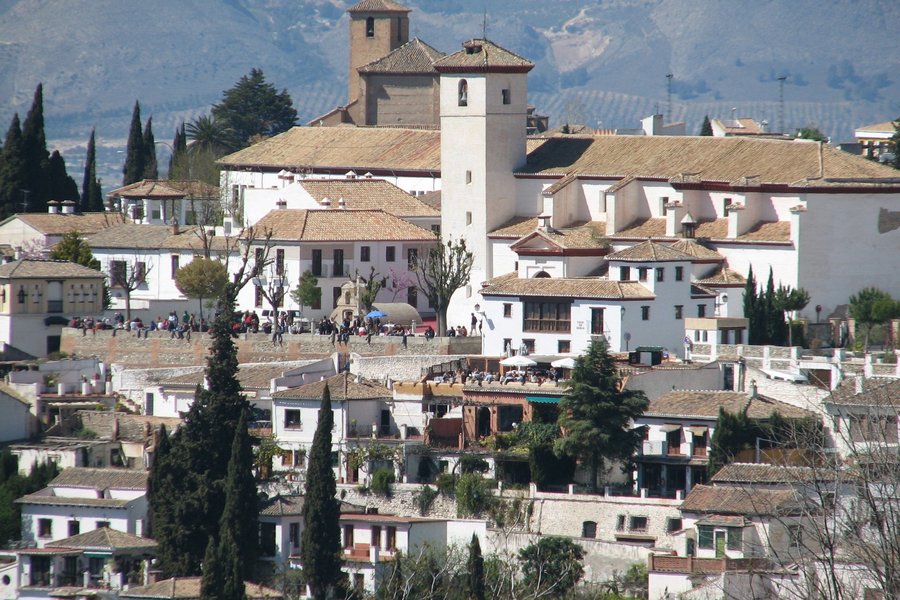
The Alhambra of Granada is a true work of art and reminiscent of a time in history few people know about - when Arabs ruled much of Europe. I have been there twice, and while my first visit in 1996 was just a quick day trip from the Costa del Sol, in 2013 I made sure to invest some time and effort to really see it all. The main palace is a breathtakingly beautiful place, and the Generalife Gardens and the Alcazaba Fortress are very impressive as well. You can easily spend a whole day in the complex, but after a while it will get exhausting. As mentioned elsewhere, advance reservations are highly recommended. The rest of Granada is quite interesting as well, including the Albayzín quarter with the Arab baths and the stunning San Nicol's viewpoint overlooking the Alhambra, and the Sacromonte district with its cave dwellings. The city centre features a very large Renaissance cathedral and the adjoining chapel containing the tombs of King Ferdinand of Aragon and Queen Isabel of Castile, whose marriage in 1469 paved the way for the ouster of the Arabs from Europe, a united Spain, and the conquest of the New World.
Keep reading 0 comments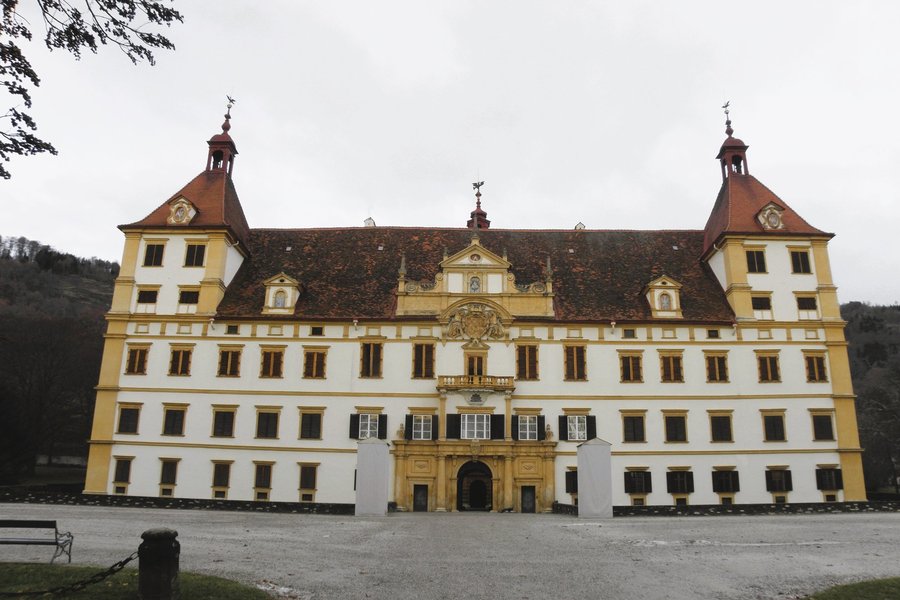
Austria's second-largest city has a beautiful centre with lots of interesting sites (the Zeughaus has the world's largest medieval armoury), but without the hordes of tourists that crowd Vienna or Salzburg. There are buildings from several epochs, which can be seen from above from the Uhrturm (clock tower), the city's landmark. The site was recently expanded to include Eggenberg Palace, a very pretty late-Renaissance building a short tram ride from the centre. It has a large garden with an interesting archaeology museum, and is certainly a worthy addition to the site.
Keep reading 0 comments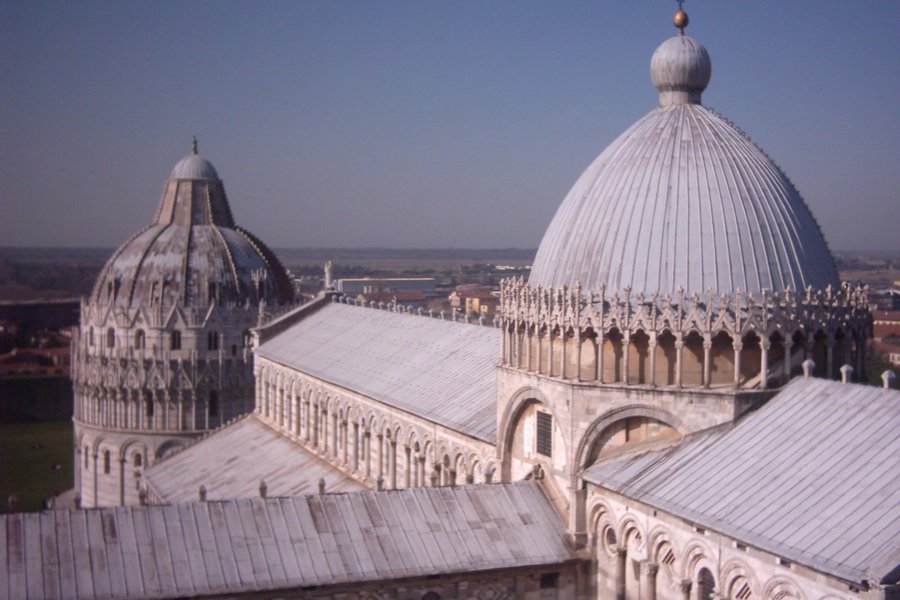
The Leaning Tower of Pisa must be one of the most famous monuments in the world, and going to this city gives you a distinct sense of déjà-vu - I must have seen this thing before! Well, apart from the Piazza dei Miracoli, Pisa doesn't have that much to offer and is just an average city (especially because it has lost its once vibrant seaport centuries ago), but the piazza is really great and one of the grandest architectural ensembles you will see anywhere. So, even if many Italian cities have their own campanile, you should go to Pisa to see the real thing.
Keep reading 0 comments